How to Create Shareable Study Materials Your Team Will Actually Use
Ever shared study notes with your team or classmates, only to have them ignore them? Traditional study materials—text documents, long PDFs, bullet-point slides—are boring and hard to use. That's why they get ignored.
Here's how to create engaging, visual study materials that your team will actually want to use, share, and learn from.
Why Traditional Shared Materials Fail
Standard shared study materials don't work because they're:
- Too text-heavy - Walls of text no one wants to read
- Boring and passive - No engagement or interactivity
- Hard to navigate - Where do you even start?
- Not visual - Difficult to understand complex concepts
- Time-consuming to create - Hours of work for mediocre results
- Not mobile-friendly - Can't study on the go
Result: Your team ignores them and everyone studies alone.
What Makes Study Materials Actually Useful?
Study materials people actually use are:
✅ Visual - Diagrams, not paragraphs
✅ Concise - Key concepts, not everything
✅ Interactive - Exercises and quizzes included
✅ Easy to navigate - Clear structure and flow
✅ Quick to review - 5-10 minute sessions possible
✅ Mobile-friendly - Study anywhere, anytime
✅ Easy to share - One link, no downloads
How to Create Shareable Study Materials
Step 1: Choose Content to Share
Decide what would help your team most:
- Course textbook chapters
- Lecture notes from class
- Research papers or articles
- Study guides or syllabi
- Online tutorials or documentation
Step 2: Access the Creator
Go to https://www.miskies.app/miskies and click "Create New Miskie".
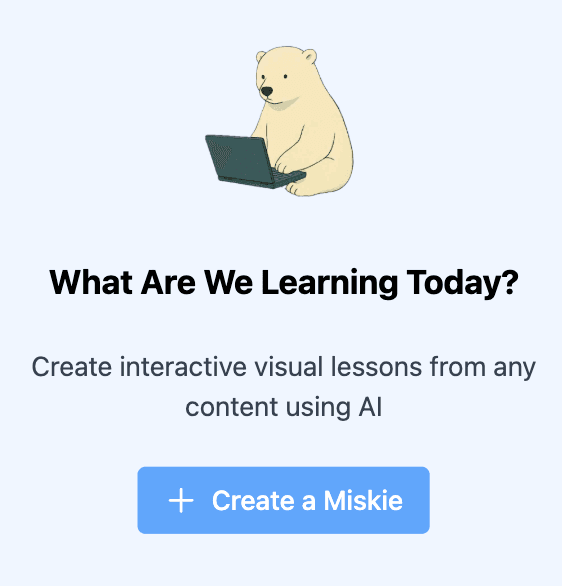
Step 3: Set Up for Team Use
Create materials with your team in mind:
- Name clearly: "Midterm Study Guide - Chapter 5-8"
- Define learning goals: "Master key concepts for exam"
- Set realistic time: "15 minutes to review"
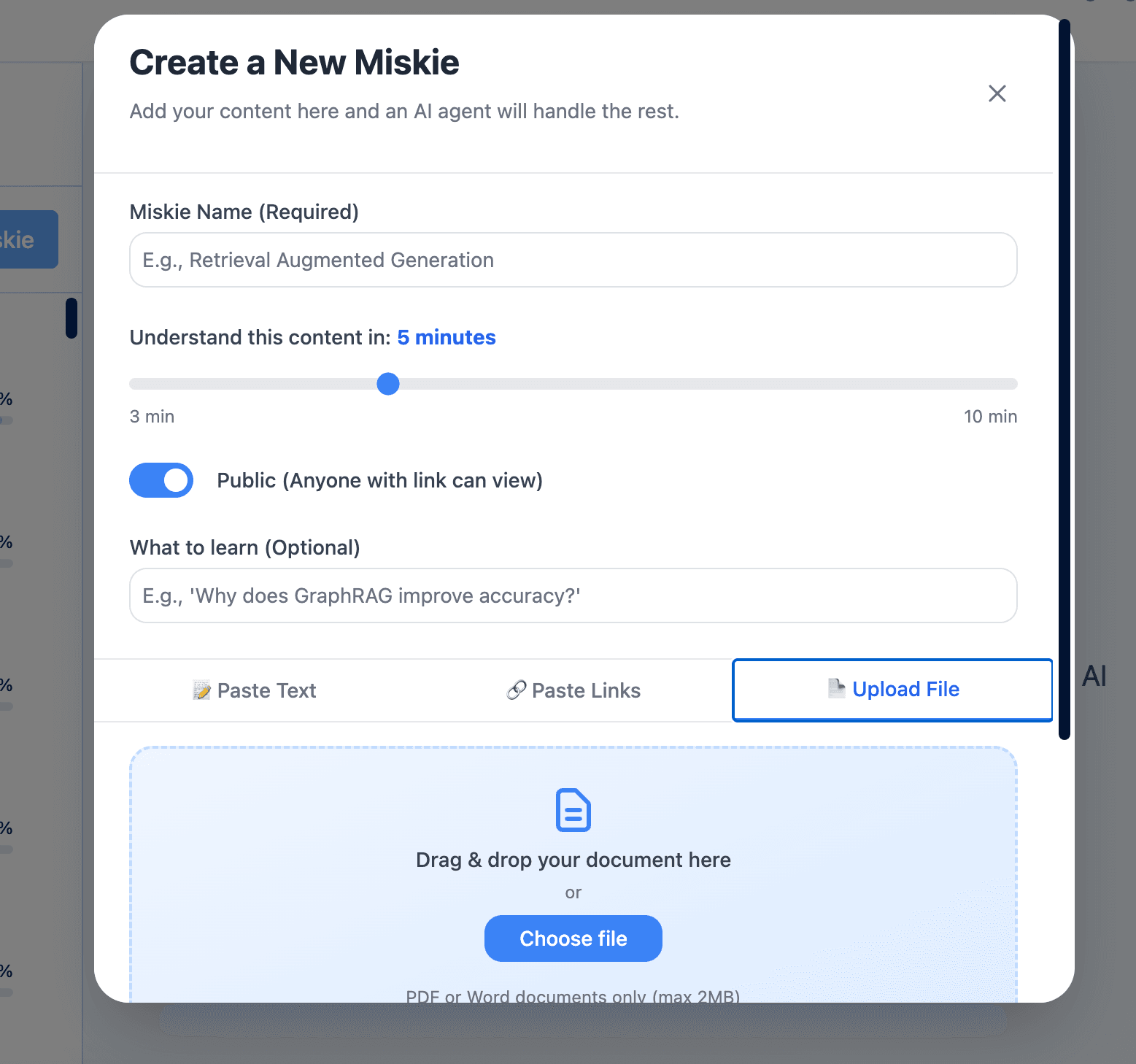
Step 4: Upload Your Content
Add materials you want to share:
- Upload PDF textbook chapters
- Paste your detailed notes
- Share links to online resources
- Include professor's study guides

Step 5: AI Creates Shareable Materials
In 30 seconds, your content becomes:
Visual Slides that are easy to understand:
- Diagrams showing relationships and hierarchies
- Flowcharts explaining processes
- Comparison charts for similar concepts
- Timeline sequences for historical content
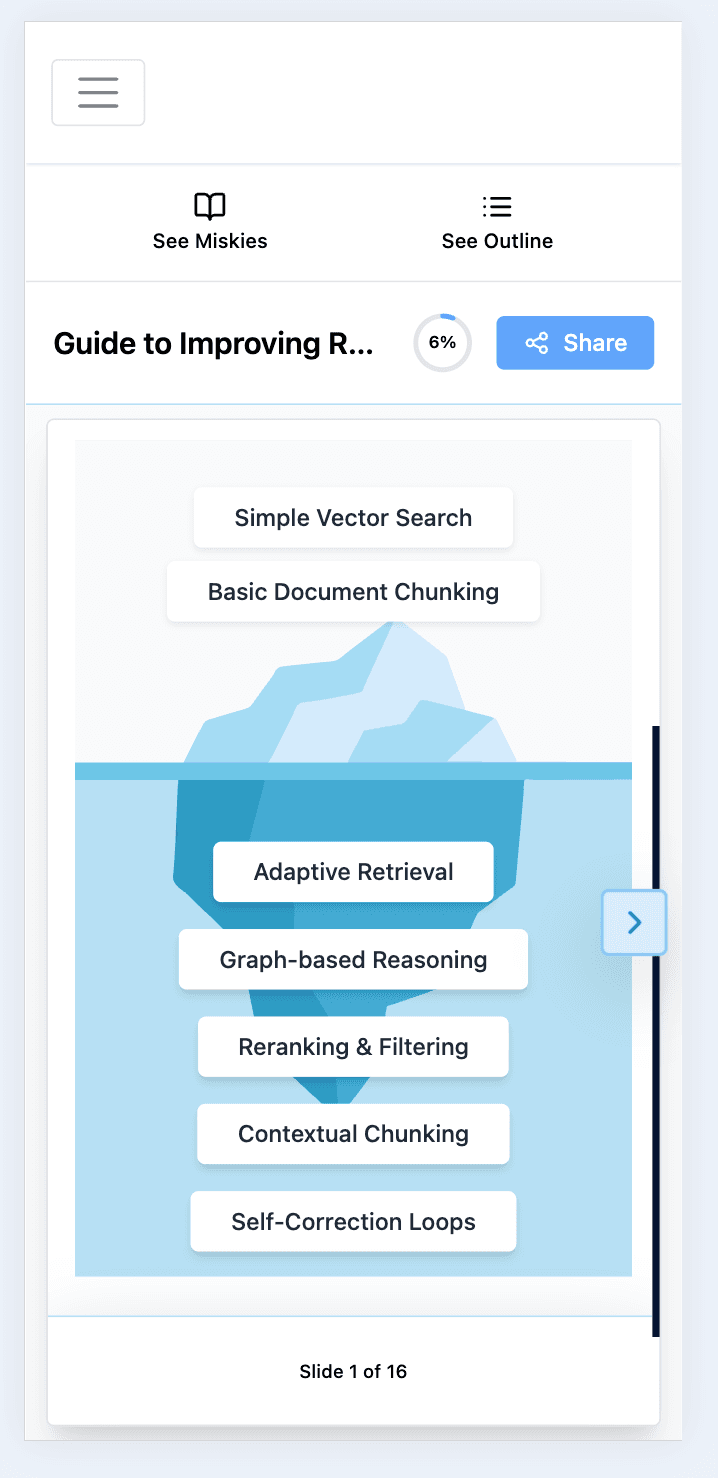
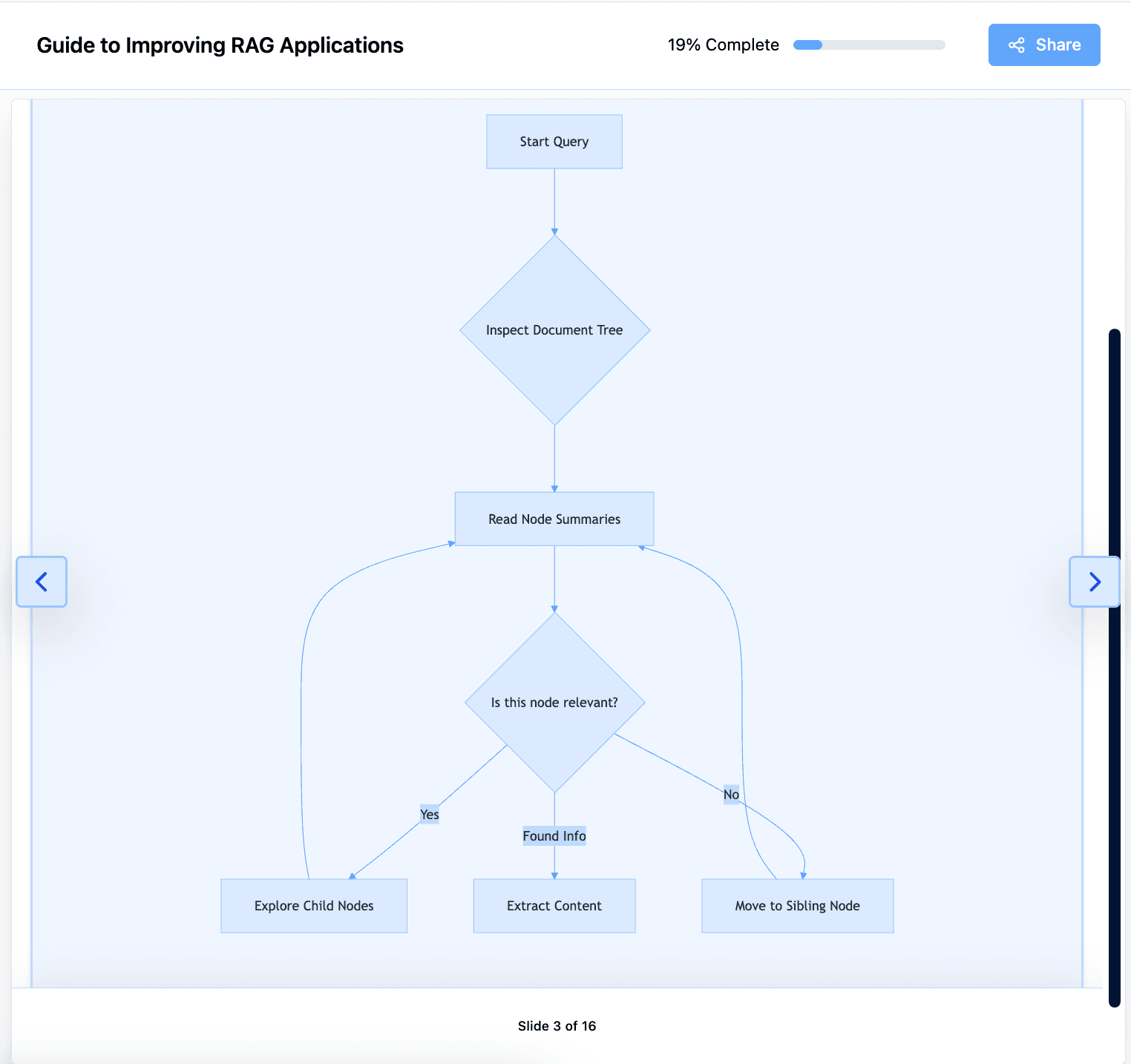
Interactive Elements that engage your team:
- Hands-on practice exercises
- Scenario-based problems
- Knowledge check quizzes
- Application activities
Organized Structure that's easy to navigate:
- Clear progression through topics
- One concept per slide
- Logical flow from simple to complex
- Easy to jump to specific sections
Step 6: Share with Your Team
Generate a public link for easy sharing:

Sharing options:
- Copy public link - Share via messaging apps
- Email to team - Send directly to group
- Post in study group - Share on Discord, Slack, Teams
- Social media - Help broader community
Types of Team Study Materials to Create
For Study Groups
Exam Prep Materials:
- Chapter summaries with key concepts
- Formula sheets with visual explanations
- Practice problems with solutions
- Concept review slides
Assignment Help:
- Step-by-step solution approaches
- Common mistakes to avoid
- Example problems worked out
- Tips and tricks for success
For Work Teams
Onboarding Materials:
- Company process flowcharts
- Product knowledge visuals
- System architecture diagrams
- Best practices guides
Training Resources:
- Skills development exercises
- Industry knowledge summaries
- Compliance requirement visuals
- Tool and software tutorials
Project Documentation:
- Project framework diagrams
- Workflow visualizations
- Decision-making processes
- Team standards and guidelines
For Learning Communities
Course Companions:
- Lecture note summaries
- Textbook visual guides
- Additional practice problems
- Concept clarification materials
Topic Deep Dives:
- Advanced topic breakdowns
- Specialized knowledge areas
- Research paper summaries
- Expert technique guides
Best Practices for Team Materials
1. Focus on What's Most Valuable
Don't try to cover everything—focus on:
- Concepts people find most confusing
- Topics covered on exams or projects
- Practical applications of theory
- Common mistakes and misconceptions
2. Make It Scannable
Team members should understand value quickly:
- Clear, descriptive titles
- Visual diagrams on every slide
- Key takeaways highlighted
- Progressive complexity
3. Include Practice Opportunities
Passive materials don't stick—include:
- Quick knowledge checks
- Hands-on exercises
- Real-world application scenarios
- Self-assessment quizzes
4. Keep It Updated
Maintain relevance by:
- Adding new information as you learn
- Correcting errors team members find
- Incorporating feedback
- Updating for new exam material
5. Organize Collections
For multiple materials:
- Use consistent naming conventions
- Group by topic or exam
- Create progressive learning paths
- Link related materials
Encouraging Team Engagement
Make Discovery Easy
Help team find your materials:
- Share links in all team channels
- Pin important materials
- Create a resource list
- Announce new materials
Show Value Immediately
First slide should demonstrate worth:
- Clear learning objectives
- Time commitment shown
- Benefit statements
- Preview of content
Facilitate Discussion
Materials should spark conversation:
- Pose thought-provoking questions
- Include controversial topics
- Encourage debate in exercises
- Ask for feedback and additions
Recognize Contributors
Build community around sharing:
- Thank people who create materials
- Highlight helpful resources
- Feature top contributors
- Encourage others to create
Examples of Successful Team Materials
Computer Science Study Group
Created:
- Algorithm visualization slides for each major algorithm
- Data structure comparison diagrams
- Coding pattern practice exercises
- Interview question breakdowns
Result:
- 15+ team members used regularly
- Average exam scores improved 12%
- Study sessions more focused and efficient
Medical School Class
Created:
- Anatomy visual references
- Disease process flowcharts
- Drug mechanism diagrams
- Clinical case practice problems
Result:
- Entire cohort accessed materials
- Reduced study time by 40%
- Improved board exam performance
Marketing Department
Created:
- Framework application guides
- Campaign process workflows
- Customer journey visualizations
- Analytics interpretation charts
Result:
- New hires onboarded 50% faster
- Consistent strategy application
- Improved cross-team collaboration
Engineering Team
Created:
- System architecture diagrams
- Best practice visualizations
- Troubleshooting flowcharts
- Code review checklists
Result:
- Reduced onboarding time
- Fewer production issues
- Better code quality
Measuring Material Effectiveness
Track success metrics:
Usage Indicators:
- How many team members access materials?
- How often are materials reviewed?
- Which materials are most popular?
Learning Outcomes:
- Did exam scores improve?
- Are project outcomes better?
- Is onboarding faster?
- Fewer repeated questions?
Team Feedback:
- What do people find most helpful?
- What's missing or unclear?
- What format works best?
- What should be added?
Advanced Sharing Strategies
The Repository Strategy
Create a comprehensive library:
- Make materials for entire course/project
- Organize by week or topic
- Create master index
- Update throughout semester/project
The Collaborative Strategy
Build materials together:
- Different team members create different topics
- Share all in one location
- Review and provide feedback
- Synthesize best elements
The Progressive Strategy
Build knowledge step-by-step:
- Start with fundamentals
- Link to intermediate materials
- Connect to advanced topics
- Create learning pathways
The Real-Time Strategy
Materials for immediate needs:
- Create study guide right before exam
- Make reference during project
- Quick refreshers for meetings
- Just-in-time learning resources
Explore What Others Share
Get inspiration from the community: https://www.miskies.app/miskies/explore
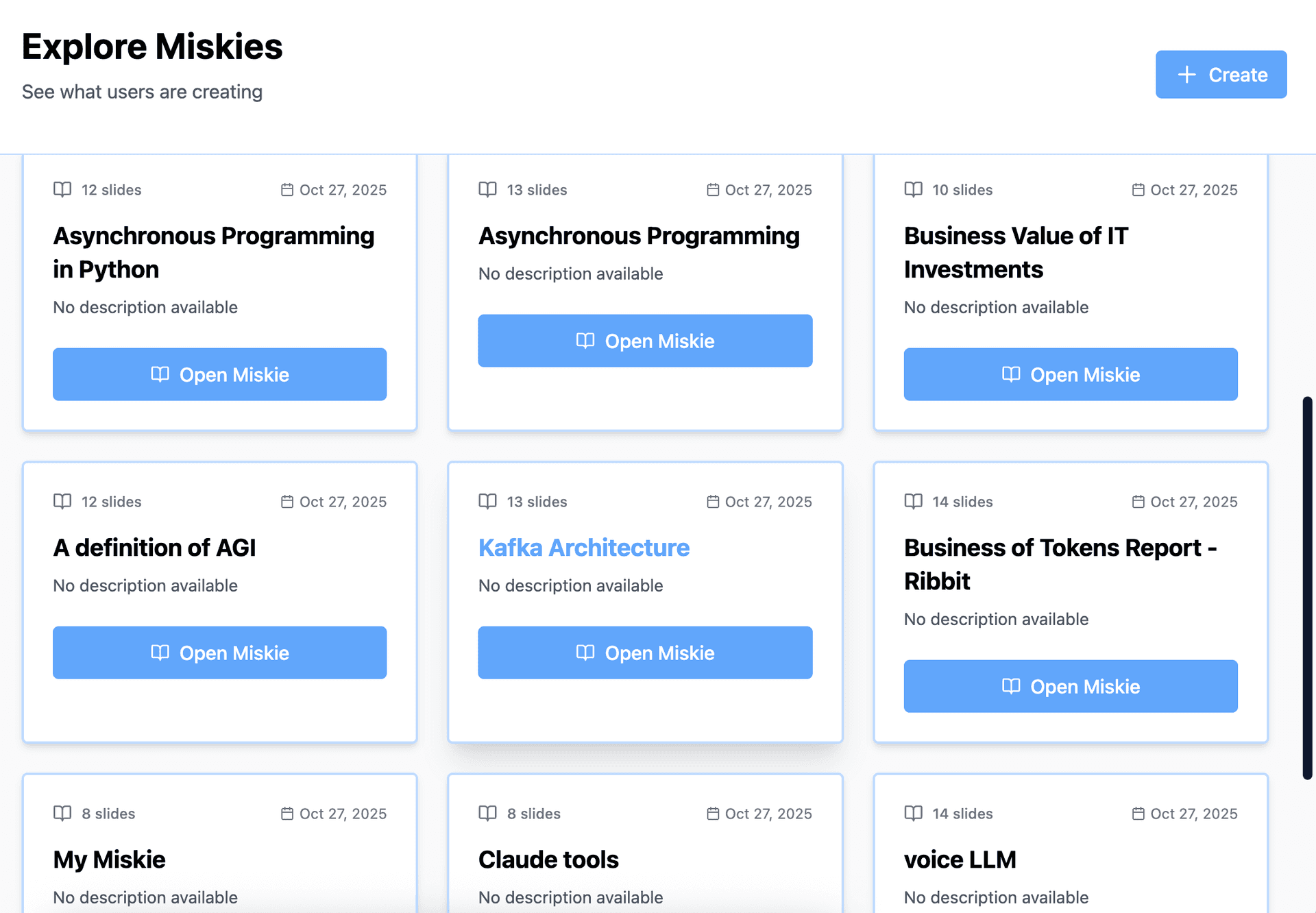
Discover:
- Popular study materials
- Different visualization approaches
- Exercise and quiz styles
- Organization methods
Common Sharing Mistakes to Avoid
❌ Making materials too comprehensive ✅ Focus on key concepts only
❌ No clear learning objectives ✅ State upfront what people will learn
❌ Only text-based slides ✅ Include visual diagrams and interactivity
❌ Creating once and forgetting ✅ Update based on feedback and new info
❌ Not promoting to team ✅ Actively share and encourage use
❌ Making materials too long ✅ Keep to 10-15 minute review time
Why Teams Love Miskies Materials
Students say:
- "Finally study materials I actually want to use"
- "Saved our study group so much time"
- "The visuals make everything click"
Professionals say:
- "Best onboarding materials we've created"
- "Team actually reads these, unlike our old docs"
- "Made training engaging instead of boring"
Educators say:
- "Students love sharing these with each other"
- "Encourages peer-to-peer learning"
- "Creates active learning community"
Start Creating Shareable Materials Today
Stop creating study materials no one uses. Start making visual, interactive, shareable content your team will actually love.
Visit Miskies AI and create your first team study material in 30 seconds.
Free Forever • One-Click Sharing • No Downloads Required
Better study materials mean better learning outcomes for your entire team.
Keywords: shareable study materials, team study resources, collaborative learning materials, group study guides, shareable visual slides, team learning resources, study group materials, create study guides, shareable education content, team study tools